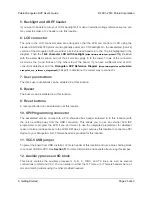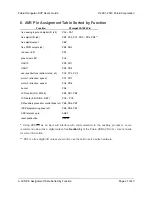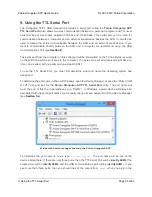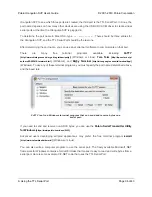
Orangutan SVP to see which three ports are created; the third port is the TTL Serial Port. In Linux, the
port name depends on how many other devices are using the USB CDC ACM driver to create virtual
serial ports at the time the Orangutan SVP is plugged in.
To determine the port name in Mac OS X, type
ls /dev/tty.usb*
. There should be three entries for
the Orangutan SVP, and the TTL Serial Port should be the last one.
After determining the port name, you can use any serial port software to communicate on that port.
There
are
many
free
terminal
programs
available,
including
PuTTY
[http://www.chiark.greenend.org.uk/~sgtatham/putty/]
(Windows or Linux),
Tera Term
[http://hp.vector.co.jp/
authors/VA002416/teraterm.html]
(Windows), and
Br@y Terminal
[http://sites.google.com/site/terminalbpp/]
(Windows). To use any of these terminal programs, you must specify the port name determined above,
and the baud rate.
PuTTY is a free Windows terminal program that can send and receive bytes on a
serial port.
If you need to send and receive non-ASCII bytes, you can use the
Pololu Serial Transmitter Utility
for Windows
[https://www.pololu.com/docs/0J23]
.
Advanced users developing scripted applications may prefer the free terminal program
kermit
[http://www.columbia.edu/kermit/]
(Windows or Linux).
You can also write a computer program to use the serial port. The freely available Microsoft .NET
framework for Windows contains a
SerialPort
class that makes it easy to read and write bytes from a
serial port. Here is some example C# .NET code that uses the TTL Serial Port:
Pololu Orangutan SVP User’s Guide
© 2001–2019 Pololu Corporation
9. Using the TTL Serial Port
Page 36 of 43








































